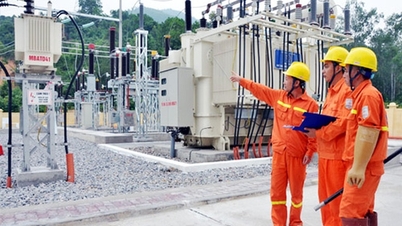 |
From the perspective of the auditing field, what do you think are the challenges in the management and supervision of digital assets today?
Ms. Truong Hanh Linh: According to the latest statistics conducted by Mastercard in 2024, the market capitalization of Digital Assets reached about 2.7 trillion USD, and 12 out of 20 countries in the G20 group, accounting for 57% of global GDP, have regulations related to digital assets. The above figures show strong interest in digital assets in the recent period from the market and stakeholders. Vietnam is among the world's leading countries in terms of access and use of digital assets.
However, Vietnam still does not have an official legal framework for digital asset investment, although domestic digital asset buying, selling and trading activities are still very active and through international exchanges; or direct agreements. That has posed unprecedented challenges to standards, regulations on assets, financial markets, valuation requirements as well as risk management and control for this type of asset. From an auditing perspective, in my opinion, some of the challenges in managing and supervising this type of asset are as follows:
Legally, there needs to be a specific definition such as: what is digital asset, ownership and responsibilities related to each specific type of digital asset to be able to guide organizations and individuals involved in buying, selling and trading digital assets.
In terms of risk management and control related to this type of asset, financial institutions, banks and enterprises need to answer the following questions: What is the appropriate mechanism to apply management and supervision measures for digital assets? How and what are the regulations related to valuation of digital assets, when is the valuation, and what is the basis for valuation of such assets? In addition, digital infrastructure to monitor and ensure the safety and security of digital assets is an issue that cannot be ignored.
Currently, the National Assembly is drafting the Law on Industry and Digital Technology, thereby specifying the legal framework for digital asset investment. The legal corridor is a prerequisite. However, I believe that guidelines as well as specific implementation solutions for banks, financial institutions and businesses are very important to build a safe, transparent and effective investment environment.
Carbon credits are currently an asset used as collateral by many countries. What recommendations do you have on this issue for Vietnam?
Ms. Truong Hanh Linh: Many experts support the view that it is necessary to recognize and have a plan for "Carbon Credit" to become a type of collateral in credit at banks. This not only helps banks expand sustainable linked products and green lending products. The Law on Environmental Protection 2020 No. 72/2020/QH14 defines: carbon credit is a tradable certificate, representing the right to emit one ton of CO₂ or equivalent. Although initially recognized commercially, carbon credit is not yet specifically recognized by Vietnamese law as a collateral in bank credit transactions. Therefore, in my opinion, Vietnam needs to learn and learn practical lessons from some countries such as the EU, Singapore or Brazil in implementing the carbon credit exchange market as well as making this credit a collateral in credit activities.
Banks must comply with the regulations of the regulatory agency on lending activities, in addition, each bank must develop regulations for credit activities and credit risk management.
In your opinion, where should Vietnam start to build an effective legal corridor for digital assets and carbon credits, avoiding the situation of having to fix things while doing them?
Ms. Truong Hanh Linh: In order for carbon credits to become collateral, in my opinion, there needs to be a clear legal mechanism, including the following factors:
Carbon credits must be recognized as property and must be clearly defined as a type of “property” or “property right” in the Civil Code; it can be valued, transferred, pledged, mortgaged, similar to stocks and bonds.
Regulations on mortgages, handling of borrowers' insolvency, guidance on pricing mechanisms and a regularly updated carbon credit trading price list, accepted by state management agencies or trading floors. Vietnam has Decree 06/2022/ND-CP on emission reduction and carbon market development, but there is a need for additional specific guidance documents on credit trading, trading and mortgage.
There should be guidelines for standardizing qualified credits, such as only carbon credits certified by international standards (Verra, Gold Standard...) or authorized agencies in Vietnam, with clear origin, no duplication and audited/assessed can become collateral.
Next, we need to build a technical infrastructure to manage and monitor “carbon credits”, first of all, we must aim to complete the implementation of a national carbon trading floor with a credit payment – clearing – depository system, integrating emission data from businesses and connecting to the international carbon market. Second, we need to build a national database of carbon credits that records the origin of credits and the owner as well as the status of credits (unused, traded, offset, etc.).
In addition, banks and financial institutions need to improve their capacity to build and manage sustainable financial products, deploy procedures for assessing and managing carbon credits as collateral, along with monitoring and handling carbon credits when bad debts occur.
Thank you!
Source: https://thoibaonganhang.vn/carbon-tin-chi-va-tai-san-so-can-som-hoan-thien-khung-phap-ly-de-ho-tro-thi-truong-tai-chinh-163542.html




![[Photo] Ho Chi Minh City residents "stay up all night" waiting for the April 30th celebration](https://vphoto.vietnam.vn/thumb/1200x675/vietnam/resource/IMAGE/2025/4/30/560e44ae9dad47669cbc4415766deccf)
![[Photo] Ho Chi Minh City: People are willing to stay up all night to watch the parade](https://vphoto.vietnam.vn/thumb/1200x675/vietnam/resource/IMAGE/2025/4/29/cf71fdfd4d814022ac35377a7f34dfd1)
![[Photo] Demonstration aircraft and helicopters flying the Party flag and the national flag took off from Bien Hoa airport](https://vphoto.vietnam.vn/thumb/1200x675/vietnam/resource/IMAGE/2025/4/30/b3b28c18f9a7424f9e2b87b0ad581d05)
![[Photo] General Secretary attends special art program "Spring of Unification"](https://vphoto.vietnam.vn/thumb/1200x675/vietnam/resource/IMAGE/2025/4/29/e90c8902ae5c4958b79e26b20700a980)
















![[Photo] Hanoi is brightly decorated to celebrate the 50th anniversary of National Reunification Day](https://vphoto.vietnam.vn/thumb/1200x675/vietnam/resource/IMAGE/2025/4/29/ad75eff9e4e14ac2af4e6636843a6b53)



































































Comment (0)